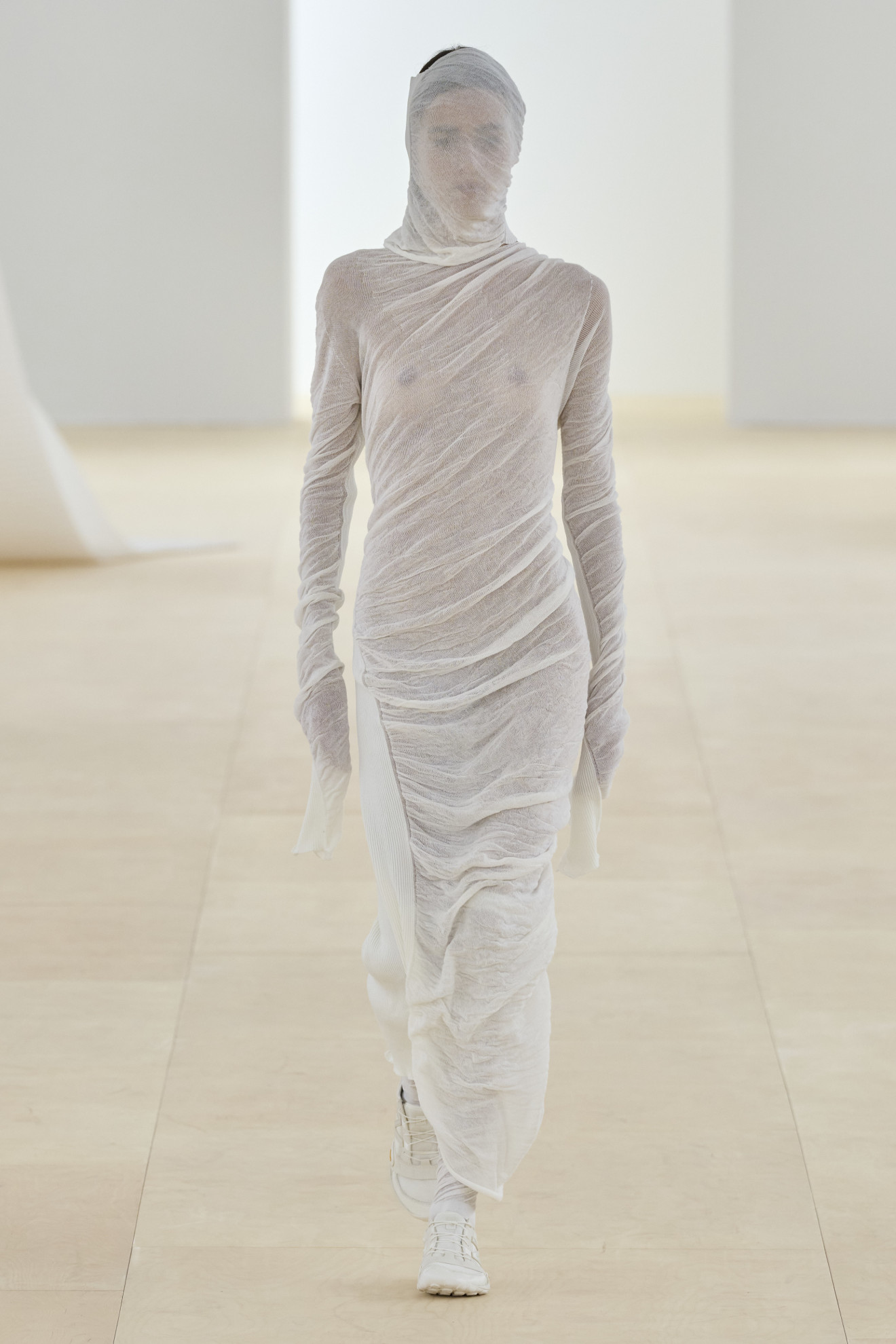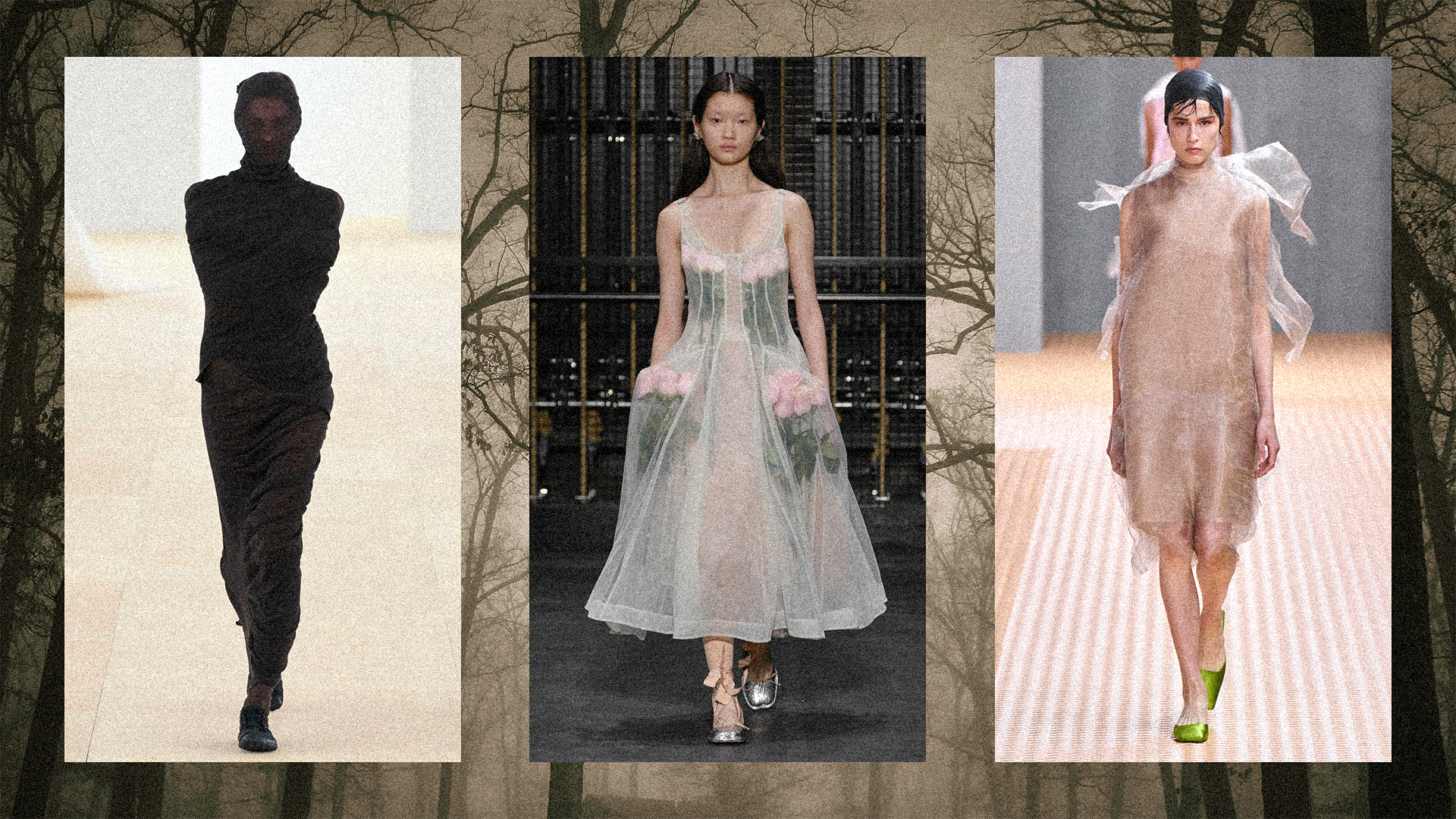Things got a bit eerie this fashion month, with runways seemingly haunted by a plethora of sheer, unravelled creations. Much like you can with ghosts, you could see straight through these garments – into their stitching, lining, binding, boning, seams, pockets and, in the case of Undercover and Simone Rocha, the contents of their pockets, too. You could see the garment’s very skeletons, not to mention the body of the wearer underneath. But these creations were too eerie to be about sex appeal (as sheer pieces often are). So, what were they trying to reveal?
An early indication came at Eckhaus Latta during New York Fashion Week, where models descended the Rockefeller Centre’s escalators in structural lace three-pieces, black lace dresses or gossamer tops and skirts. Hari Nef wore a tailored, sheer skirt suit, embroidered with the ‘EL’ logo and featuring the brand’s signature lapped seams. The garments were revealing, sure, but not in an overtly sexy, Agent Provocateur-y way. Rather, their sheerness revealed something about how the piece was made and worn on the body. “The sheer pieces weren’t first about being naked, it was more of a study in fabrication as well as how something like a logo can become decorative. They almost feel like tattoos when you wear them,” elaborate Zoe Latta and Mike Eckhaus over email.
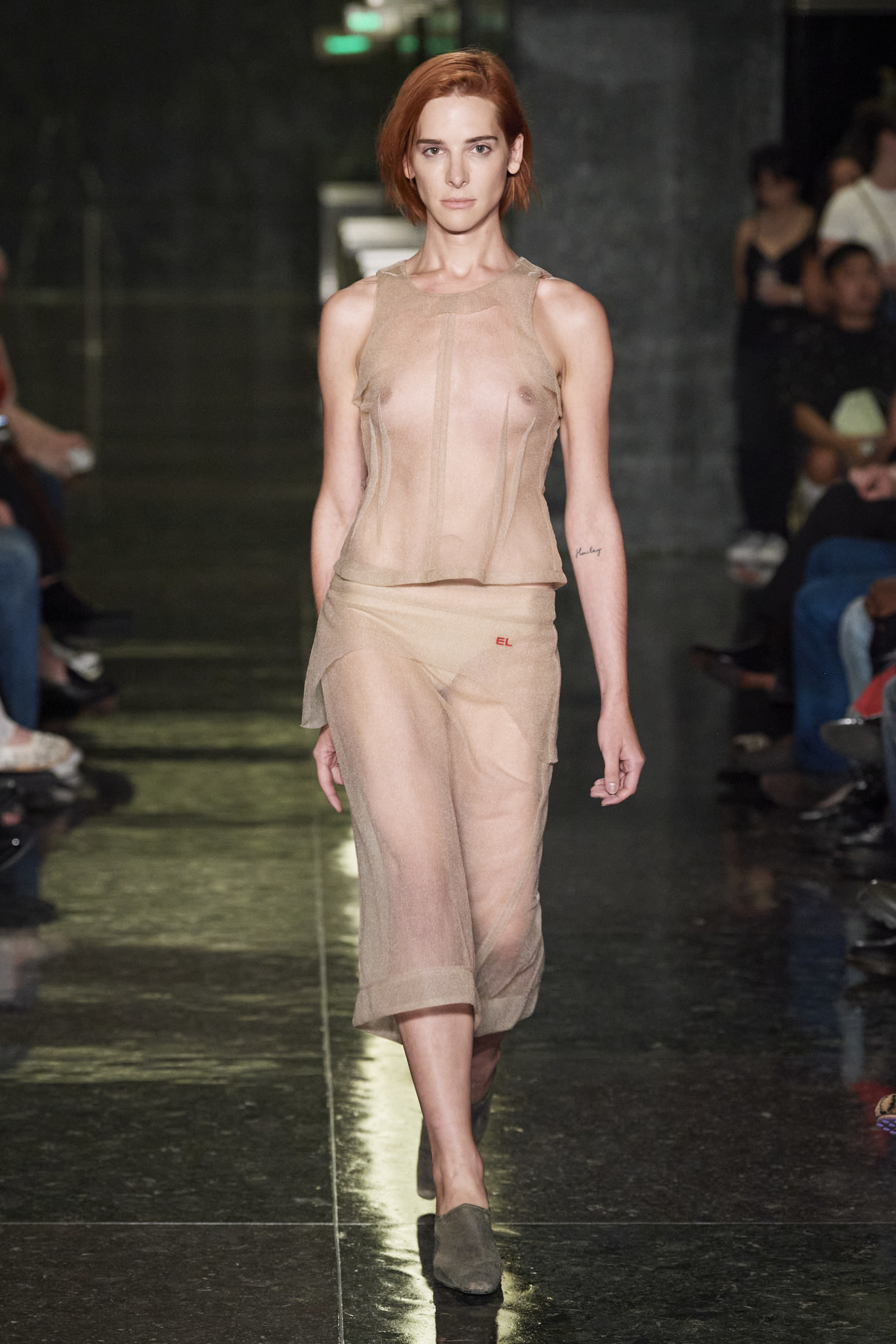
Although nudity wasn’t their point, Eckhaus Latta’s sheer garments definitely implied a certain focus on their (naked) wearer. Designing for IRL human bodies has always been the label’s forte, that’s made clear by their pioneering casting and easy-to-move-in creations. “We really aren’t interested in making things that don’t last or have a resonance beyond the show,” the duo explains. “It’s important for us that our product reflects and is available to the real world, to all people.” In other words, while they may look good there, Eckhaus Latta’s clothes aren’t made to be seen in a magazine spread or on your Instagram feed (which is usually how we engage with fashion today). Instead, they’re made – rather meticulously – to be worn.
Shows in London built on this theme, too. Simone Rocha’s took place in the stripped-back rehearsal space of the English National Ballet, and the idea of a dress rehearsal reverberated throughout (although the show notes pointed to a rehearsal for a wedding, rather than a performance). Some models wore all-black gowns, one gathered with red strings and another with a long-stemmed rose tucked into a black sheer pocket. Others wore spectral sheer dresses, occasionally with roses trapped inside. While the sheerness exposed a level of craft that usually remains concealed, the roses (although romantic) imparted a mournful timbre. They prompted you to wonder: if these cut flowers will inevitably wilt, what does that mean for the dresses in which they’re trapped?
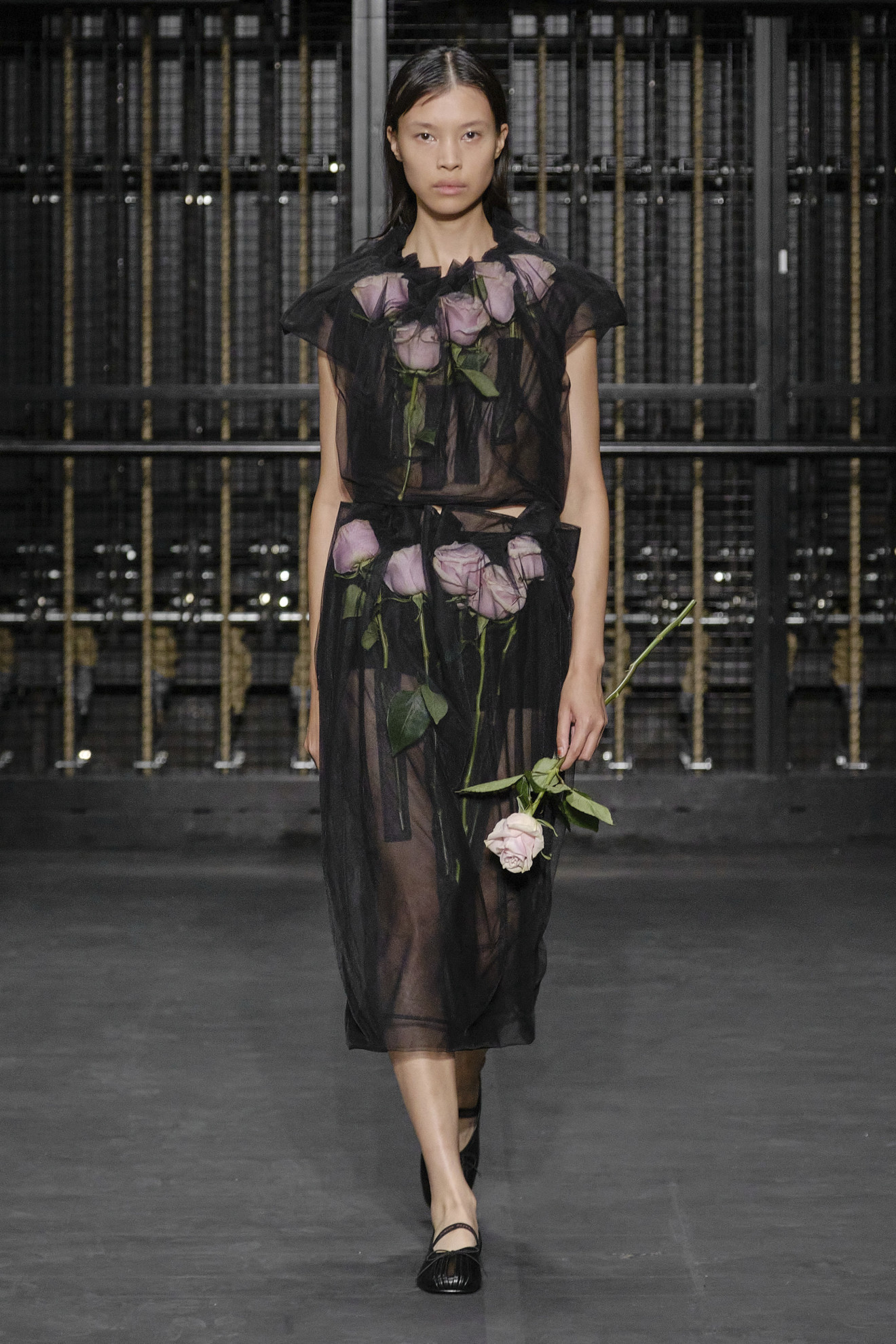
Compared to her characteristic neon-coloured mountains of tulle, Molly Goddard’s SS24 collection felt significantly more unravelled, too. That was a conscious choice: Molly researched this collection at the National Theatre costume hire. Here, she looked at historical undergarments (crinolines, Georgian underskirts, bras from the 1950s, Victorian christening gowns, even bedding) and specifically, their inner details. “I have always loved looking at the inside of garments; often the more handmade the better,” she notes via email. “Lots of the pieces I looked at from the National Theatre costume hire had been altered multiple times, labels revealing who had worn them and strange finishings.” Her SS24 collection was all about exposing these details and entrails, resulting in spectral-looking sheer dresses with visible corset-like boning, or skirts with frills peeking out of their hems. There was an abundance of undone grosgrain and zip plackets, exaggerated zigzag stitches and seam lines.
These creations were essentially phantoms; summoning the forgotten ghosts of fashion history, harkening back to a time when clothes required a vast amount of invisible handwork to hug (or corset) real human bodies for a lifetime. “I wanted to highlight these details and put the focus on them – how things are made is what interests me the most,” the designer says.
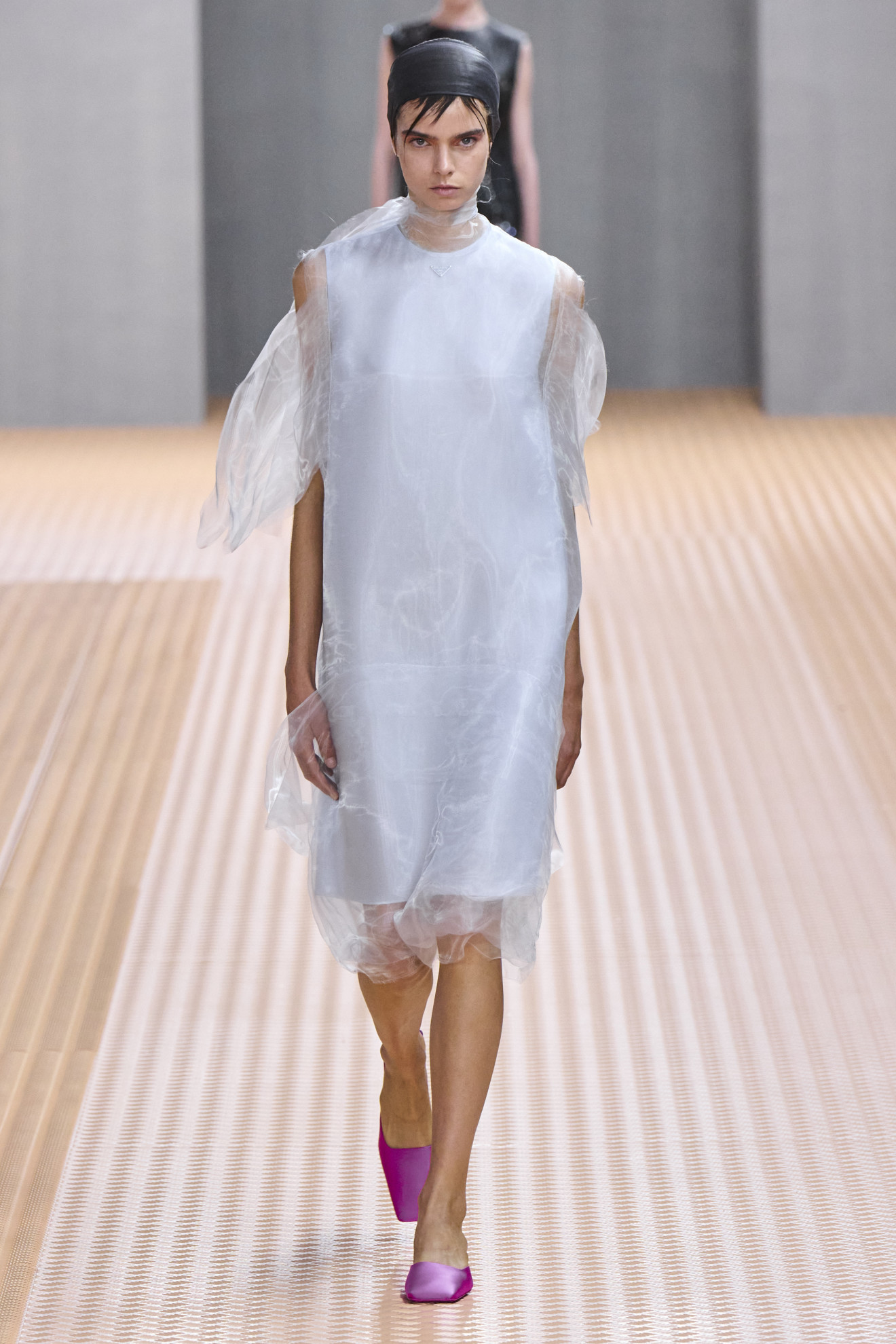
The phantoms paid a visit to Milan, too. Prada’s latest collection reconnected with the house’s history of craftsmanship, featuring a reinterpretation of the handbag first introduced by Mario Prada in 1913 – with clasps that featured hand-carved, playfully spooky iterations of the house founder’s head. Aside from Mario’s ghost (who was undoubtedly present), Prada’s ‘ghosts’ wore fluid gazar mini dresses, shrouded in gossamer chiffon that floated behind them as they moved.
In Paris, Jun Takahashi’s Undercover toyed with the idea of fading memories. His runway was home to an abundance of tailored, sheer fabric – aptly ‘uncovering’ the details and skeletons of his trousers, skirts and jackets. You could see all the way through, to the stitching, lining, darts, labels and pockets with nicknacks stuffed inside: playing cards, straight razors, squished flowers and, as the grand finale, a terrarium of butterflies. Metaphorically (and thankfully), the butterflies were released after the show. The other trinkets felt like tiny, nostalgic inheritances: everyday stuff that’s meaningless without context, but irreplaceable when the person (or time, or place) it belonged to no longer exists. In combination with the gauzy veils and countless (fake) spiders crawling the clothes, they gave the collection a haunting tone. That might’ve been, at least in part, because Takahashi was grieving lost ones himself.
Subscribe to i-D NEWSFLASH. A weekly newsletter delivered to your inbox on Fridays.
Upon first glance, the creations in Issey Miyake’s SS24 collection seemed mournful too, thanks to its abundance of black (and occasionally white or beige) sheer fabric. In the first few looks, a sheer knit was twisted and draped, veiling the wearer from head to ankle. These banshee-like looks were a homage to Miyake’s Tube Veils from Spring 1998. In later looks, the black sheer fabric was pleated, more loosely draped or tailored into a suit. Paired with oversized hats and scarves, the models could pass for a modern, more minimalist interpretation of Victorian widows.
Perhaps, it’s inherently mournful to conjure up a fashion house’s past, especially if you’re referencing the creations of designers who have since passed (as is the case with Issey Miyake and Mario Prada). But Issey Miyake’s SS24 show felt more tranquil than overtly deathly. In the accompanying press release, the house explained that it explored the natural, fluid relationship between a garment and the body of its wearer.
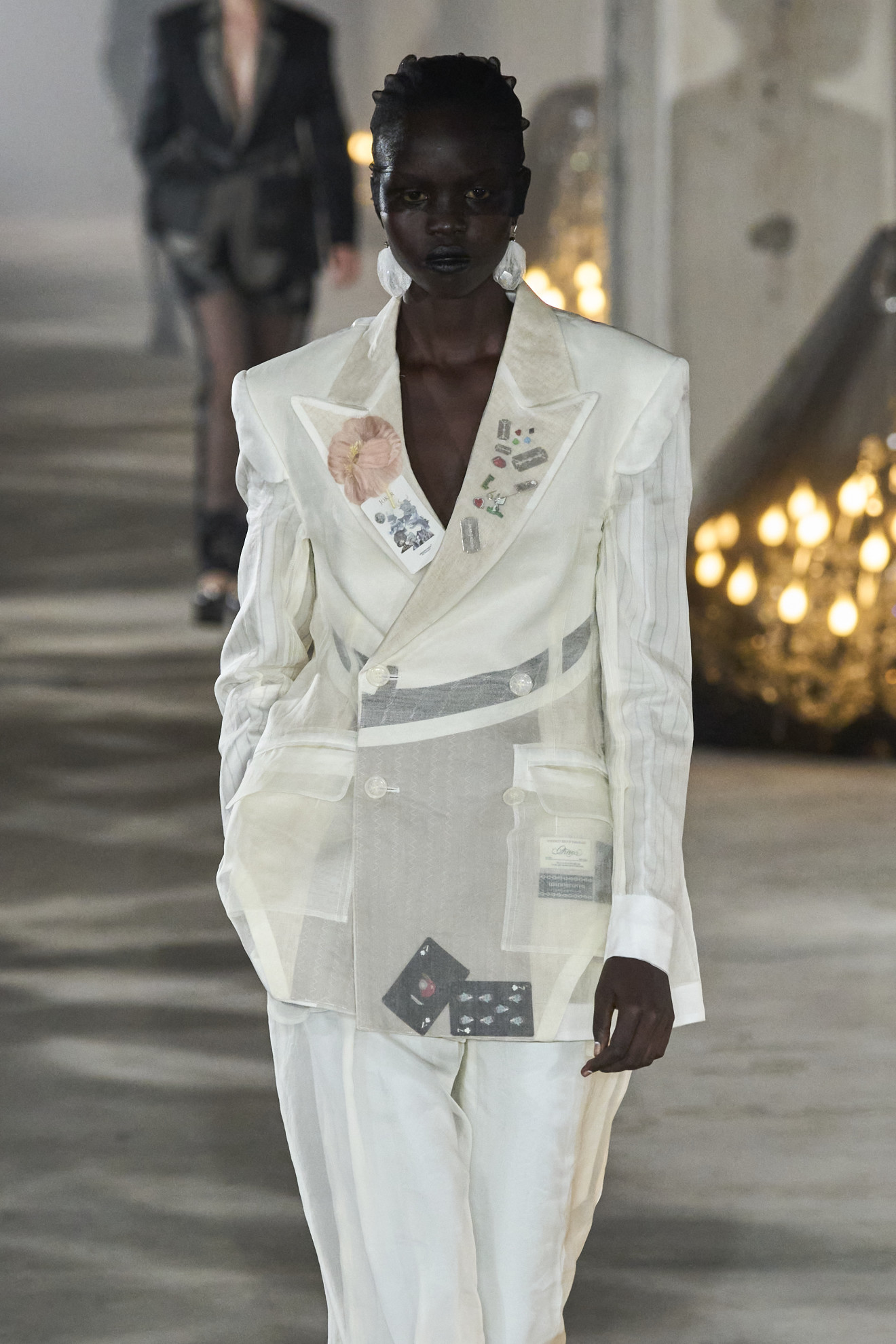
It’s an important connection to make. After all, clothes transform the body, expanding a shoulder, tailoring a waist, hugging a hip… And a body can transform clothes, filling, shifting, stretching, twirling, creasing or staining them. In Worn Worlds: Clothes, Mourning and the Life of Things, literary professor Peter Stalybrass mourns his best friend Allon by wearing Allon’s favourite jacket. “If I wore the jacket, Allon wore me,” he writes. “He was there in the wrinkles of the elbows, wrinkles that in the technical jargon of sewing are called ‘memory’.”
A similar notion could be applied to the translucent pieces we saw on runways this season — from Molly Goddard’s spectral inside-out pieces, which, though new, reference alterations and wearer’s notes from their historical counterparts, to Issey Miyake’s sheer shrouds, seemingly haunted by recollections of the house’s past. While an easy explanation would be that this season’s translucent pieces feel ghostly simply because they’re see-through, it is, in effect, their ability to invoke memories that are ultimately irrecuperable. Whether they’re memories of the hands responsible for the clothes creation, or future anterior memories of the bodies they’re destined to clothe, each of these garments amounts to a palpable reminder of time fading away.
